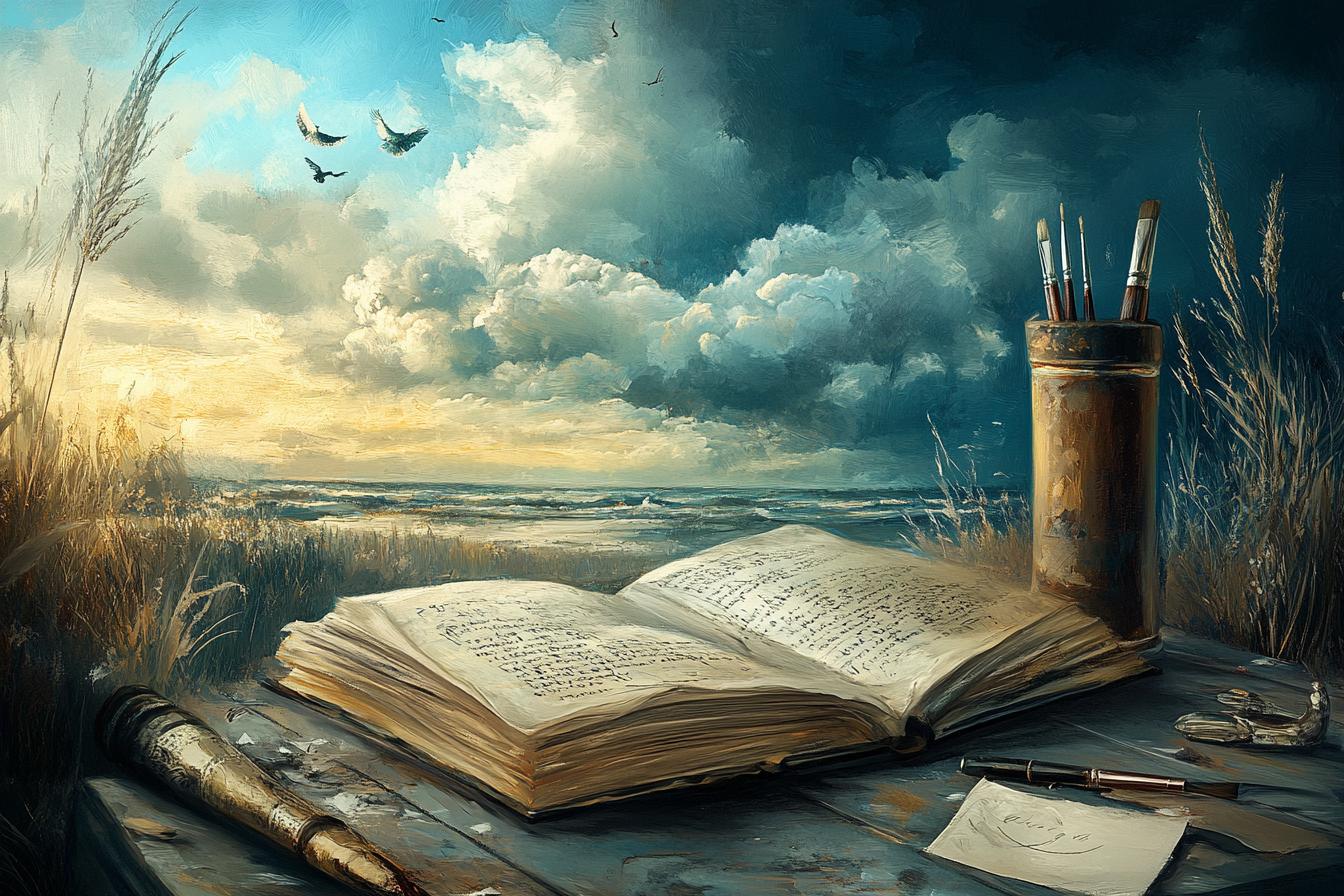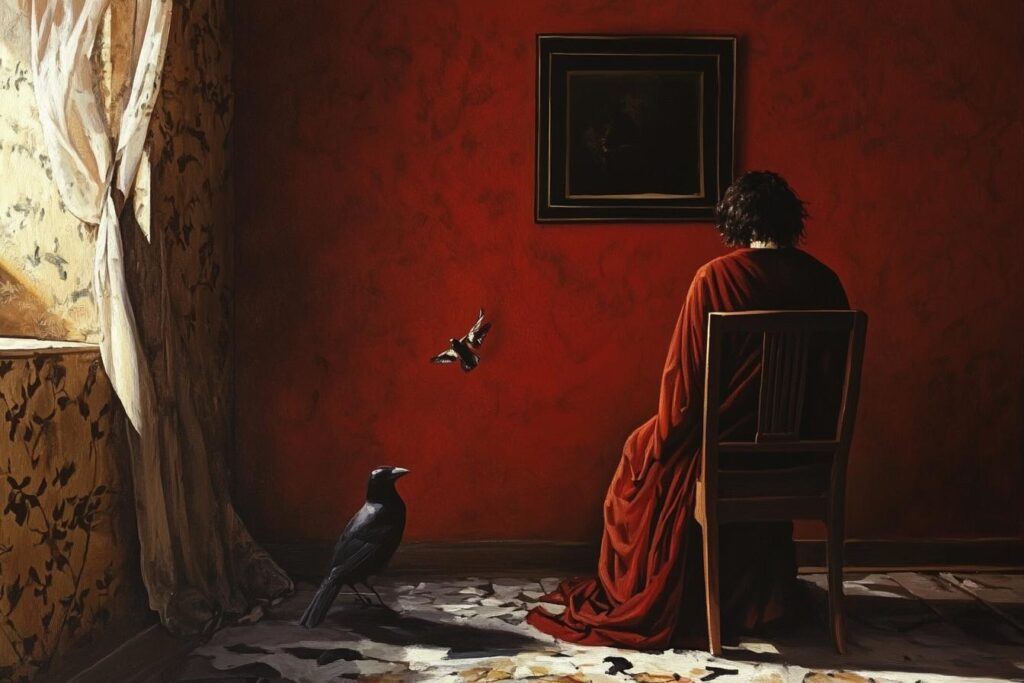Poetry is considered an art form because it transcends simple language and uses words in a deliberate and artful manner. Poets manipulate language to evoke emotions, paint vivid imagery, and create powerful connections with their audience. They choose words carefully, considering their sound, rhythm, and meaning, to craft a unique and memorable experience. Just as a painter uses brushstrokes and colors, a poet uses metaphors, similes, and other literary devices to express their vision. Consider the poem “The Road Not Taken” by Robert Frost. His carefully chosen words, rhythm, and imagery create a profound reflection on the choices we make in life, leaving a lasting impression on the reader.
Furthermore, poetry is an art form because it allows for subjective interpretation and personal resonance. The meaning of a poem can vary depending on the reader’s background, experiences, and understanding of the world. This open-endedness fosters a unique and intimate connection between the poem and the reader. Unlike a mathematical equation with a definitive answer, poetry invites us to engage with its layers of meaning, contemplate its themes, and create our own interpretations. In this way, poetry becomes a personal journey of discovery and reflection, making it a powerful and enduring art form.

1. Why Is Poetry Considered an Art Form
Poetry is considered an art form because it uses language in a creative and expressive way to evoke emotions, create imagery, and explore ideas. Poets carefully choose words, sounds, and rhythms to craft their poems, employing various techniques such as metaphor, simile, and alliteration to paint vivid pictures in the reader’s mind. This intentional use of language allows poets to express complex thoughts and feelings, offering unique perspectives on the world and the human experience.
Beyond its technical aspects, poetry also connects with the reader on a deeper level through its ability to inspire, provoke, and resonate. A well-crafted poem can ignite the imagination, challenge assumptions, and leave a lasting impact on the reader. This profound effect on the human experience is why poetry has been cherished as an art form for centuries, continuing to inspire and captivate audiences across cultures and generations.
2. Poetry uses language creatively and intentionally
Poetry takes the everyday language we use and bends it, twists it, and molds it into something new and beautiful. Poets carefully select words to evoke specific emotions and images, creating a tapestry of sound and meaning. They play with rhythm and rhyme, creating patterns that enhance the impact of their words. This intentional use of language goes beyond simply conveying information; it seeks to create a unique and memorable experience for the reader.
Furthermore, poetry often employs figurative language like metaphors, similes, and personification. These devices allow poets to express complex ideas and emotions in a concise and impactful way. They compare and contrast, create vivid imagery, and give human qualities to inanimate objects, drawing the reader deeper into the poem’s world. By using language in such a creative and intentional way, poets elevate their work to the level of art, inviting us to experience the world in a new and profound way.
3. It expresses emotions, ideas, and experiences
Poetry possesses a unique ability to convey the depths of human emotions, thoughts, and lived experiences. Unlike other art forms that primarily focus on visual or auditory elements, poetry employs language as its primary medium. Through carefully chosen words, poets can evoke a wide range of feelings, from joy and love to sorrow and despair. They can also explore complex philosophical concepts, delve into personal memories, and offer insightful perspectives on the world around us.
Furthermore, poetry’s power lies in its ability to create vivid imagery and evoke sensory experiences. By using metaphors, similes, and other literary devices, poets can paint pictures with words, allowing readers to engage with the subject matter on a visceral level. This immersive quality of poetry allows individuals to connect with the poet’s emotions and experiences, fostering empathy and understanding.
4. Poetry employs figurative language and sound devices
Poetry frequently uses figurative language, which allows poets to create vivid images and express complex ideas in unique ways. Metaphors, similes, personification, and hyperbole are common examples of figurative language. These techniques create a departure from literal meaning and invite the reader to engage with the poem on a deeper level. For example, a poet might use a metaphor to compare a loved one to a rose, suggesting beauty and fragility.
In addition to figurative language, poetry also makes use of sound devices, which contribute to the poem’s rhythm and musicality. Alliteration, assonance, consonance, and onomatopoeia are among the sound devices that poets employ to create a pleasing effect on the ear. These devices can also evoke specific emotions or enhance the meaning of the poem. For instance, the repetition of certain sounds in a poem can create a sense of urgency or a feeling of peacefulness.
5. It evokes aesthetic and emotional responses
Poetry, like other art forms, possesses the power to stir both aesthetic appreciation and deep emotional responses within the reader. This happens through the careful use of language, imagery, and sound. Poets use words to paint vivid pictures in our minds, creating a sensory experience that engages our sight, hearing, smell, taste, and touch. These carefully chosen words can transport us to different worlds, allowing us to experience emotions like joy, sadness, anger, and love in a profound and personal way.
Beyond the visual and sensory aspects, poetry delves into the complexities of human experience, exploring themes of love, loss, hope, despair, and the search for meaning. This exploration resonates with the reader on an emotional level, prompting reflection, introspection, and a deeper understanding of the human condition. Poetry offers a unique lens through which we can examine our own emotions and connect with universal human experiences, forging a powerful connection between the poet and the reader.
6. Poetry often explores universal themes
Poetry, unlike many other art forms, delves into the depths of human experience, exploring themes that resonate with all of us. Love, loss, joy, grief, hope, and despair are just some of the universal emotions that poets capture in their words. These themes transcend cultural boundaries and resonate with individuals across generations, providing a shared language for understanding the complexities of life.
By exploring these universal themes, poetry creates a space for connection and empathy. It allows readers to recognize their own experiences reflected in the poet’s words, fostering a sense of understanding and shared humanity. This is one of the key reasons why poetry endures and continues to captivate audiences, reminding us that we are not alone in our struggles and triumphs.
Conclusions
So, there you have it! Poetry is an art form that uses language in a special way, not just to tell a story, but to create a feeling, an experience. It’s like a magician with words, making them dance and sing to create pictures in your mind and emotions in your heart. Poets take ordinary words and twist them into something extraordinary, evoking a powerful response through their unique use of language and clever techniques. They explore big themes that touch us all – love, loss, joy, sorrow – and leave us feeling something new, something powerful. Whether you’re a seasoned poetry lover or a curious newcomer, poetry is a journey worth taking, a world waiting to be explored.

